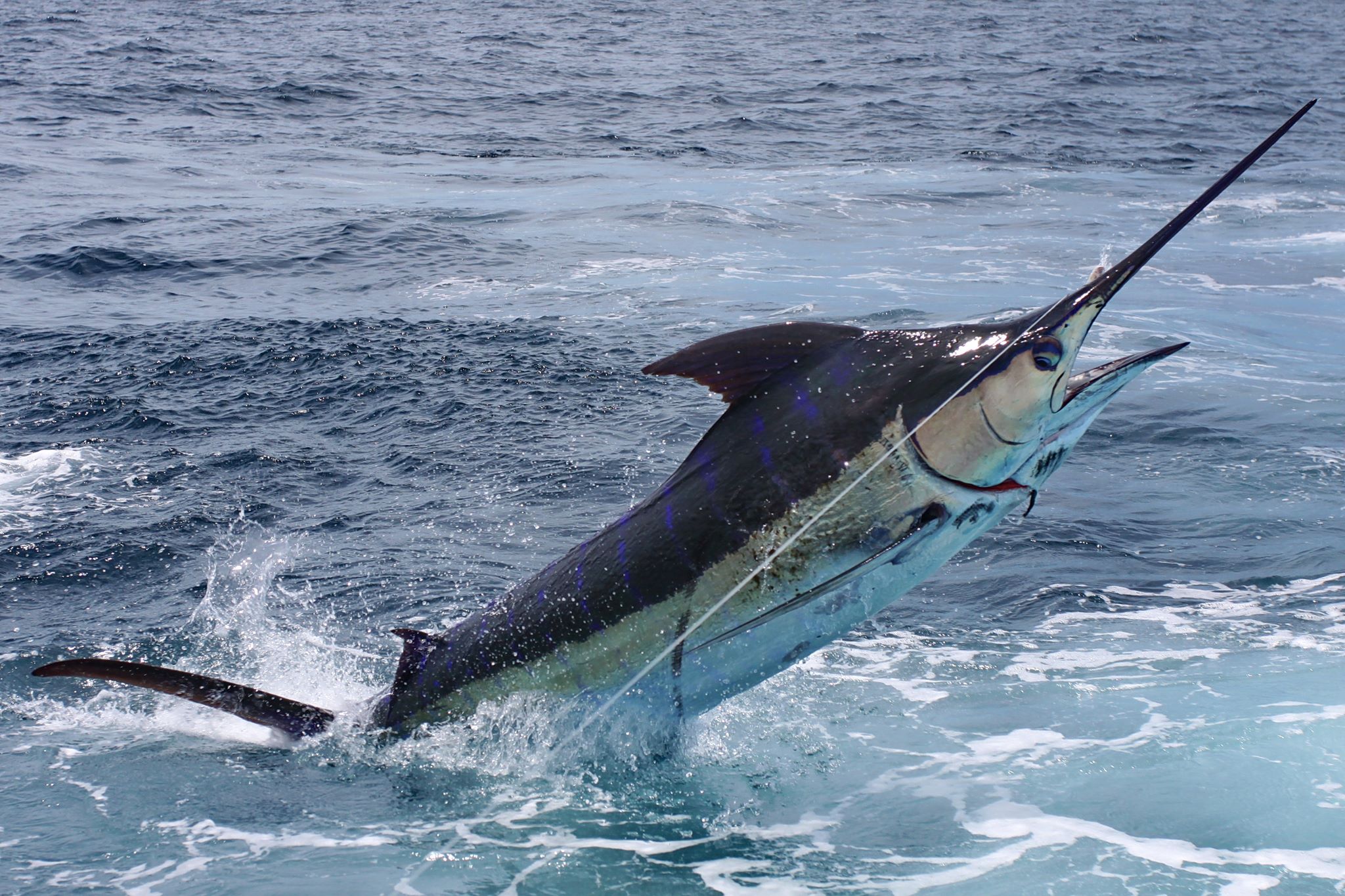
Makaira nigricans
FAMILY
Istiophoridae
TAXONOMY
Makaira nigricans Lacepede, 1802, Bay of Biscay. Some authors,
such as Nakamura (1985), differentiate the Indo-Pacific
blue marlin, M. mazara (Jordan and Snyder, 1901), as a separate
species.
OTHER COMMON NAMES
French: Makaire bleu; Spanish: Aguja azul.
PHYSICAL CHARACTERISTICS
Blue marlin reach approximately 16 ft (5 m) in total length and
weigh more than 1,984 lb (900 kg). Body not very compressed,
nape highly elevated, body deepest at level of pectoral fins.
Two dorsal and two anal fins. First dorsal fin with 39–43 rays;
height of anterior lobe less than greatest body depth, not saillike.
Second dorsal fin with six or seven rays, slightly posterior
to second anal fin. Pectoral fins with 20–23 rays, depressible
against sides of the body. Pelvic fins shorter than pectoral fins
with one spine and two rays. Lateral line looped. Body covered
with densely imbedded scales, each with one or two long, acute
spines. Left and right branchiostegal membranes broadly
united. Vertebrae, 24. Swim bladder made up of many small
bubble-shaped chambers. Body blue dorsally, silvery white ventrally,
first dorsal fin membrane blue-black, unspotted; body
has approximately 15 obscure vertical light bars.
DISTRIBUTION
Most researchers consider the blue marlin to be a single
pantropical species occurring in all three major oceans. Blue
marlin are the most tropical of the billfishes, chiefly distributed
in equatorial areas.
HABITAT
Epipelagic zone of oceans, usually waters with surface temperatures
of 71.6–87.8°F (22–31°C).
BEHAVIOR
Observations suggest that marlins use their bills to stun their
prey.
FEEDING ECOLOGY AND DIET
Feed mostly in near-surface waters but sometimes make trips
to relatively deep waters for feeding. Prey includes dolphinfishes,
tuna-like fishes, particularly frigate tunas, and squids.
REPRODUCTIVE BIOLOGY
Little is known about spawning grounds or seasons. The eggs
are very small, approximately 0.04 in (1 mm) in diameter, and
pelagic, hatching into planktonic larvae.
CONSERVATION STATUS
Not threatened.
SIGNIFICANCE TO HUMANS
Being excellent foodfishes, all species of marlin are of some
importance to fisheries, particularly in Japan. They are
mostly caught on long lines incidental to the target tuna
species. FAO catch statistics for 1991–2000 show catches of
26.7–37.3 thousand tons (24.2–33.8 thousand metric tons)
per year by 34 countries. Blue marlin are especially important
to sportfishermen and are much sought after off Cuba
and on the Bahamas side of the Straits of Florida. The alltackle
gamefish record is a 1,402-lb (636-kg) fish taken off
Vitуria, Brazil.
Photo Gallery of - Blue marlin

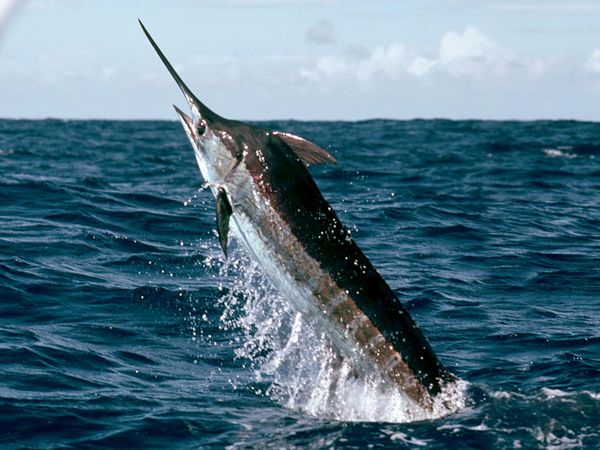
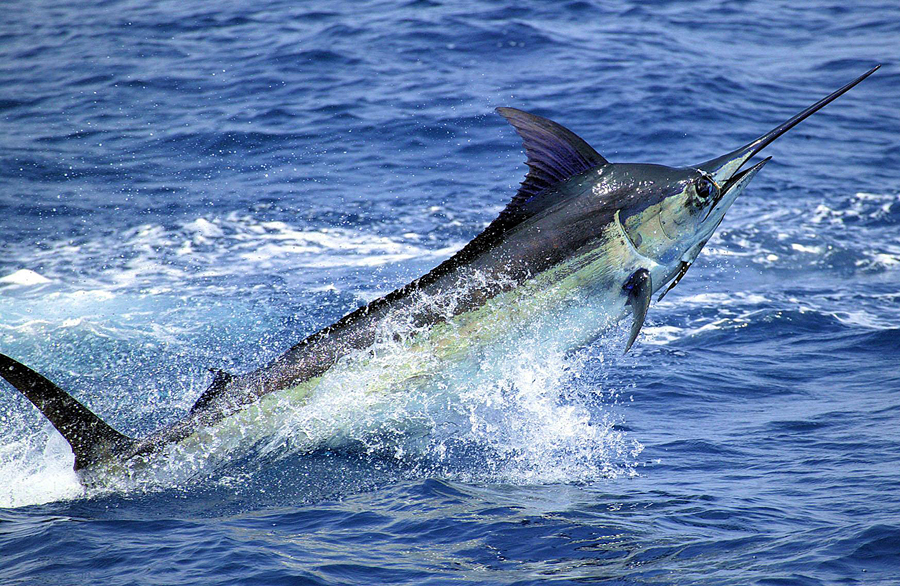
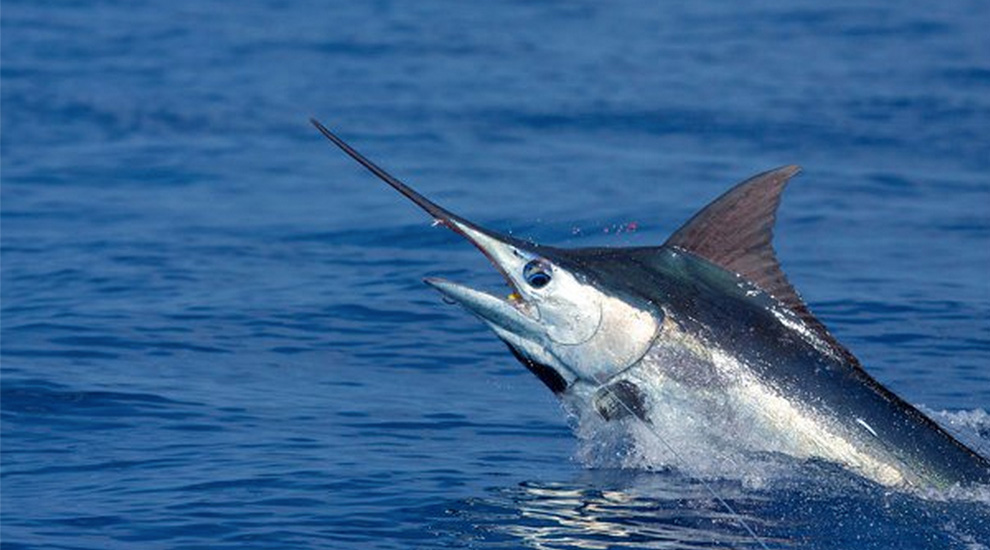
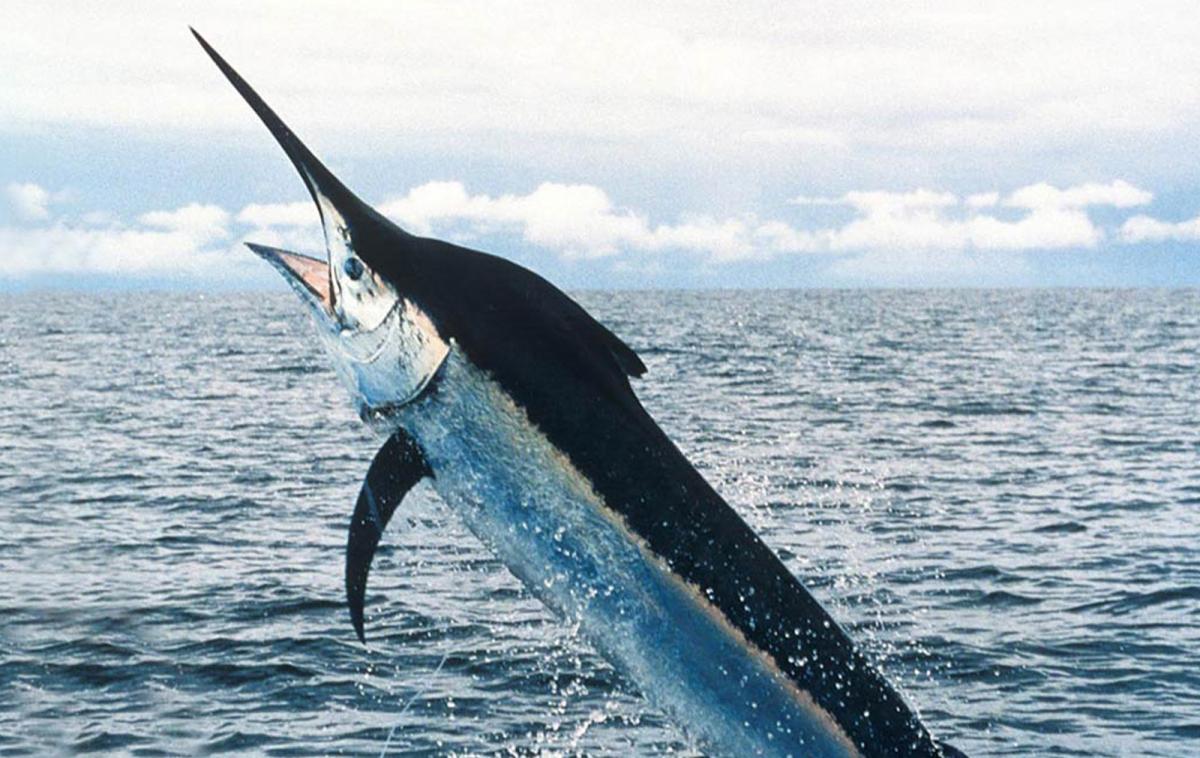
 Animalia Life
Animalia Life